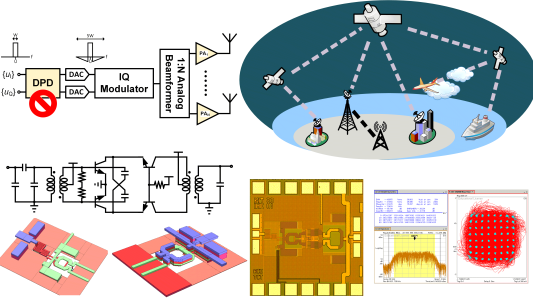Demonstration of Power Amplifier Technology in SiGe BiCMOS and Novel Reconfigurable Load Modulation Technique for Large-Scale Active Arrays

Advanced III-V technologies, especially wide-bandgap GaN, are the engines powering the rapid deployment of various SATCOM multi-beam active antenna arrays in space today. Although power levels per element in the recent Direct Radiating Arrays (DRAs) are typically in the order of few watts (e.g. for GEO with HPA MMICs 2-15W), already now it is apparent that larger deployable active antennas with hundred or even thousand elements will yield much lower power per radiating element with DRA. As a result, alternative technologies such as SiGe are being considered for tapered DRAs or extremely large deployable DRAs, where the required power levels might be in the range of 15-25 dBm. At the same time, state-of-the-art results in the area of SiGe power amplification were demonstrated at Ka-band using European SiGe process, which is undergoing space qualification. The latter will be the scope of this activity: critical assessment of SiGe power amplification for advanced DRAs by means of design, manufacturing and testing of the first SiGe power amplifier suitable for the next generation large DRAs operating in the 17.3-20.3GHz band. Key figures of merit such as output power, DC-RF efficiency, linearity will be assessed on chip for its applicability as a building block in near-future, large-scale array technology. In addition, investigations on the reliability and load-pull characterization of proposed PA will be conducted, to determine its robustness against impedance variations that may arise in a large-scale antenna array. Furthermore, investigation of a reconfigurable load modulation technique is proposed, which will potentially enhance the robustness against antenna impedance variations.
